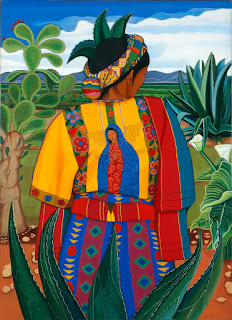In Border Arte, Gloria Anzalduá documents the jarring experience of walking through an exhibition at the Denver Museum of Natural History called Aztec: The World of Moctezuma and being taught about her indigenous roots through the lens of white individuals. This seems like a shared experience because growing up I read textbooks and visited museum exhibitions throughout California that presented historical narratives about my ancient Mexican heritage incorporating the elements of colonization. When Mexican or Chicanx artists aren’t the creators of these narratives and works of art that feature the histories, identities, and languages of Mexican culture, we passively consume the “white version of the culture” and we aren’t made aware that many of these cultures are still thriving today (1). Border art attempts to bridge the gap in representations of cultures by creating artwork that presents a “culture mix, una meztizada” and touches on identity and immigration (3). Anzalduá notes that to be “disoriented in space is the ‘normal’ way of being for “mestizas living in borderlands” in the United States leading to the creation of this counter art and embracement of the "in-betweenness" felt by many immigrants living in this country. Anzalduá includes Santa Barraza’a painting titled Nepantla, a word that means "the land between", because this image capture the between-ness she feels as both a Native American and Chicana women. Her painting includes different icons and symbols to depict a collision between two cultures.
Although I was exposed to historical bias through my education, I had the opportunity to visit my family in Mexico growing up and engage with artwork and exhibitions created by Mexican artists. Learning about the history of my ancestors from both a white perspective and a native perspective has allowed to understand the importance of interacting with artwork outside the dominant culture.

No comments:
Post a Comment